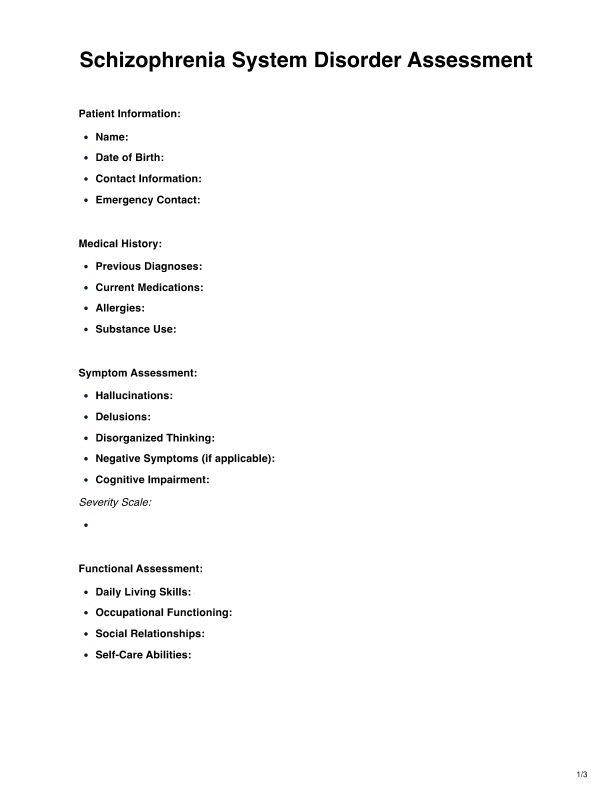Symptoms may include hallucinations, delusions, disorganized thinking, negative symptoms (such as social withdrawal), and cognitive impairment.

Schizophrenia System Disorder
Unlock insights into managing Schizophrenia System Disorder with comprehensive healthcare resources and support for individuals and their families.
Use Template
Schizophrenia System Disorder Template
Commonly asked questions
Diagnosis involves a comprehensive assessment by mental health professionals, considering symptomatology, medical history, and functional impairments.
Treatment often includes a combination of antipsychotic medications, psychotherapy, and support services tailored to the individual's needs.
EHR and practice management software
Get started for free
*No credit card required
Free
$0/usd
Unlimited clients
Telehealth
1GB of storage
Client portal text
Automated billing and online payments











